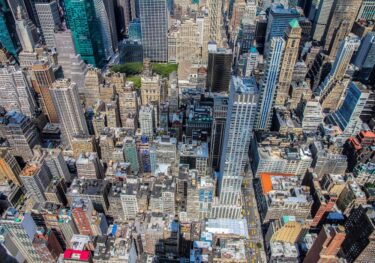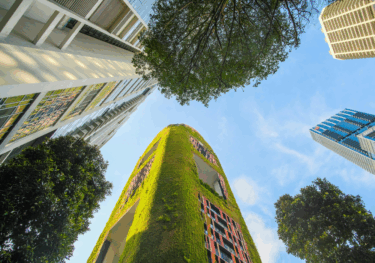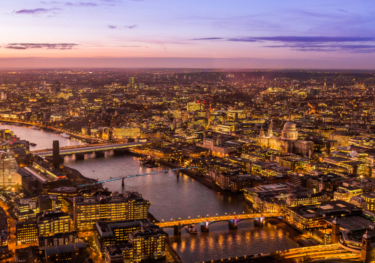The virtuous cycle of culture and prosperity in the world’s cities
Last year, shortly after the launch of our inaugural Global Cities Index, I gave a presentation to the Society of Property Researchers in collaboration with BOP Consulting, covering the outlook for the world’s powerhouses and cultural capitals. Since then, the global economic outlook has become increasingly uncertain, and our short-term forecasts for city economies around the world have changed substantially. But underneath the noise and volatility that has pervaded the last few months, it has been comforting to reassess the fundamental strengths that cities demonstrate, and the inherent machinations of the urban machine that ensures cities will continue to drive the global economy for decades to come.
Culture can drive prosperity for city residents
Cultural Capitals are among the most prominent examples of the “agglomeration effects” that underpin these underlying strengths of urban economies. Cities in which governments, firms, and communities invest in cultural and recreational activities provide a much higher quality of life for their residents, attracting people from across the world to visit and relocate. The arrival of tourists and new residents brings an inflow of cash and new jobs to a city, boosting the local economy, improving tax receipts, and contributing to a vibrant city environment. Such improvements can provide the foundations for further quality of life enhancements, enabling more investment to sustain a “virtuous cycle” of culture and prosperity.
The benefits of this cultural virtuous cycle are not only monetary. Strong cultural and recreational institutions strengthen community bonds and foster social cohesion, with cultural and artistic institutions often being heavily involved in the charitable space. Cultural and recreational activities also stimulate creativity and innovation, which help to generate new ideas and foster entrepreneurship—two of the central tenets of agglomeration economies. And of the new residents who may relocate to these cultural capitals, they are often among the most talented individuals, seeking dynamic and culturally enriching environments in which to live and work, helping to drive innovation and productivity across the local economy.
Cultural Capitals in this year’s Global Cities Index
This year’s Global Cities Index provides the perfect lens through which to view the comparative strengths and weaknesses of the world’s Cultural Capitals. To enable this cross-cutting research, we have grouped cities into eight different “archetypes”—one of which is the Cultural Capitals. In our analysis, these cities are mostly (but not exclusively) smaller urban areas with high quality of life. They have many cultural sites, and a sizeable share of foreign-born residents. They also tend to attract residents and tourists alike due to their amenities and educational opportunities.
We have identified 63 Cultural Capitals within the 1,000 cities covered in our Global Cities Index. These range from powerhouse economies like New York and London—with among the largest cultural sectors of all cities—to smaller locations like Reykjavik, Cambridge, and Bergen, which have amongst the most cultural and recreational amenities per person in the world. These Cultural Capitals are integral to the global urban landscape; they account for a quarter of total city GDP, and more than a quarter of the world’s Global and Regional Leaders are also Cultural Capitals. They also have among the highest levels of income per person—more than 2.5 times greater than the global city average. This link between incomes, culture, and economic growth is cyclical. Residents with higher incomes have more money available to spend on discretionary goods and services including cultural and recreational activities, spurring further demand, improving resident satisfaction and happiness, and linking straight back to the virtuous cycle of culture and prosperity.
The vital role culture plays in the outlook for city economies
One of the most intriguing aspects of these Cultural Capitals is their economic outlook. Cultural Capitals are mostly European, reflecting the important role that culture plays in the European economy. Given the wider economic slowdown across developed cities, Cultural Capitals are by no means the fastest-growing cities in the world, but they do tend to outperform other cities in their countries. Around two-thirds of Cultural Capitals are forecast to significantly outperform their respective national economies over the period from 2025–30, both in terms of GDP growth and population growth, giving credence to the notion that cities with strong cultural capital experience significant agglomeration benefits, and can profit from the virtuous cycle of culture and prosperity.
The importance of migration and having a diverse population to Cultural Capitals is also revealed in our demographic outlook for cities. Across the full suite of 1,000 cities, migration is expected to account for just over 40% of total population growth, with the rest derived from natural change (births minus deaths). But in Cultural Capitals, migration is absolutely essential in shaping the economic and demographic outlook. Between now and 2050, the population of all 63 Cultural Capitals is expected to grow by just over 6 million people. But over that same period, net migration to these cities will be almost 13 million. Without migration, the population of Cultural Capitals would decline, leading to severe labour market pressures, a more rapidly ageing demographic profile, and ultimately, weaker economic growth. Being able to attract the most talented and productive migrants to these cities, drawn by the allure of an enriching environment with excellent quality of life, ensures the future prosperity of Cultural Capitals, and enables the economic overperformance which typifies their outlook.
Overall, “culture” can seem quite an intangible phenomenon, and is difficult for economists to quantify, given its both qualitative and subjective nature. Culture is also an extremely broad concept. When we talk about culture, we might be referring to the capitals of gastronomy, like Paris or Tokyo, or the architectural marvels in Barcelona and Copenhagen, perhaps the bright lights of Broadway in New York and London’s West End. But despite its breadth and intangibility, the impact of culture is revealed through our in-depth analysis of global city economies, and the fact that almost half of the world’s top 50 cities in this year’s Global Cities Index are in fact, Cultural Capitals.
In this webinar, our panel of experts will outline the key results from this year’s update and will discuss major trends impacting cities around the world—from AI to trade wars to climate change.
The Oxford Economics Global Cities Index ranks the largest 1,000 cities in the world based on five categories: Economics, Human Capital, Quality of Life, Environment and Governance. Underpinned by Oxford Economics’ Global Cities Service, the index provides a consistent framework for assessing the strengths and weaknesses of urban economies across a total of 27 indicators. To our knowledge, this is the largest and most detailed cities index in the industry. To download the full report, please fill out the form below.
Tags:
Related Reports

Tariffs and tensions are reshaping city economies
Tariff policies, rising geopolitical tensions and unprecedented uncertainty are putting pressure on cities and regions across the world.
Find Out More
The world’s leading Sustainable Cities: Built for long-term prosperity
Oxford Economics defined the archetypes using a range of metrics from all five categories of the Global Cities Index, with each archetype focusing on a different set of common traits.
Find Out More
Top regional hubs to watch in 2025
Oxford Economics defined the archetypes using a range of metrics from all five categories of the Global Cities Index, with each archetype focusing on a different set of common traits.
Find Out More
City archetypes: A new way to classify cities in the Global Cities Index
Oxford Economics defined the archetypes using a range of metrics from all five categories of the Global Cities Index, with each archetype focusing on a different set of common traits.
Find Out More
